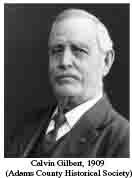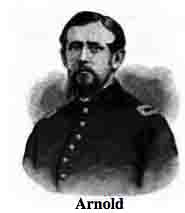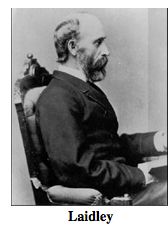
These cannons are much smaller than the other cannons used here in 1863 such as the Parrotts or Napoleons. These weapons are quickly identifiable as the tubes are black, very smooth, and almost always in terrific shape and represented at the time, some pretty serious weapon technology. Their trunnions are sometimes devoid of markings, however some examples have stamps on both trunnions. They always read the same: From the guns perspective, the left trunnion reads Patented Dec. 9, 1862 and the right trunnion reads, Phoenix Iron Co.. Their tubes do not have the breech band seen in the similar looking Parrotts, which distinguishes the two. The 3-inch carriages and limbers are also always equally pristine. This is an 1861 model but manufactured a year later in 1862. I suppose it is possible this cannon saw action here but without the month it was delivered, I cannot know for sure. This model was also mass-produced by the Confederates as well, but not nearly as well made as their Union counterparts. The stamps on the outer muzzles of these rifles are almost always legible and often times pristine which allows tracing back the manufacturing origins a snap. I think this is due to the deep incising of the registry inscription/information along the muzzle as compared to other cannons which were much more shallow in their engraving. This muzzle shows some peeling of the paint.
Through my investigations, I learned the man who made the tablets which accompany the cannons also had a hand in restoring these cannons as well. Gettysburg National Military Park has hundreds of these historic artillery pieces on its field of battle. Their carriages, sights, limbers and on rare occasion (should you find them), the caissons have all been restored. Much of the restorative work came from Major Calvin Gilbert who owned the Gettysburg foundry.

Calvin Gilbert owned a Foundry which bore his name in Gettysburg. This man was responsible for creating all of the cast iron battery tablets. His work did not end there as his foundry created many of the carriages for the historic cannons at Gettysburg. Although almost all of the cannons are from the Civil War, their carriages, sights, limbers, wheels and caissons have been restored at his foundry in the early part of the 20th century. Gilbert was in his 70s when he did this work and completed work at other battlefields as well.
The four rifles and the  Battery A, 1st Rhode Island Artillery Monument/a> are located on the left or west side of
Battery A, 1st Rhode Island Artillery Monument/a> are located on the left or west side of  Hancock Avenue (RD310) if traveling north along the road, north of the Angle. The monument is flanked on both sides by these aforementioned 3-inch ordnance rifles for a total of four at this site (2 on each side); all rifles are pointing to the west. From north to south these Phoenix Iron Co. produced rifles are registered as nos. 489, 533, 270 & 734. The
Hancock Avenue (RD310) if traveling north along the road, north of the Angle. The monument is flanked on both sides by these aforementioned 3-inch ordnance rifles for a total of four at this site (2 on each side); all rifles are pointing to the west. From north to south these Phoenix Iron Co. produced rifles are registered as nos. 489, 533, 270 & 734. The  Fitzhugh's Brigade Tablet is directly across the road. The
Fitzhugh's Brigade Tablet is directly across the road. The  1st Company, Andrews Massachusetts Sharpshooters Monument (MN218-A) is 40 feet to the right (if facing west) or north. The
1st Company, Andrews Massachusetts Sharpshooters Monument (MN218-A) is 40 feet to the right (if facing west) or north. The  14th Connecticut Infantry Monument (MN217-F) is 102 feet north of this position and the gigantic
14th Connecticut Infantry Monument (MN217-F) is 102 feet north of this position and the gigantic  Major General Meade Equestrian Statue (MN690) is northeast across the road, 222 feet away. The rifles are 397 feet north of the
Major General Meade Equestrian Statue (MN690) is northeast across the road, 222 feet away. The rifles are 397 feet north of the  High Water Mark Monument (MN230) and Copse of Trees and 701 feet due south of the
High Water Mark Monument (MN230) and Copse of Trees and 701 feet due south of the  Abraham Brian Barn (020). The monument faces due east, so on would have to face west, in the direction where the final Rebel attack originated on July 3, 1863. This area is an absolute beehive of activity as this site represents the best of what Gettysburg has to offer, both historically and monumentally.
Abraham Brian Barn (020). The monument faces due east, so on would have to face west, in the direction where the final Rebel attack originated on July 3, 1863. This area is an absolute beehive of activity as this site represents the best of what Gettysburg has to offer, both historically and monumentally.  Parking is plentiful and is available road-side at intermittently enlarged shoulder cut-outs, usually marked with white striping. Be sure to keep vehicles off the grass or you will be ticketed by park police. I visited this monument on Tuesday, August 7, 2012 at approximately 5:22 P.M. I was at an elevation of 617 feet, ASL. I used a Canon PowerShot 14.1 Megapixel, SX210 IS digital camera for the photos.
Parking is plentiful and is available road-side at intermittently enlarged shoulder cut-outs, usually marked with white striping. Be sure to keep vehicles off the grass or you will be ticketed by park police. I visited this monument on Tuesday, August 7, 2012 at approximately 5:22 P.M. I was at an elevation of 617 feet, ASL. I used a Canon PowerShot 14.1 Megapixel, SX210 IS digital camera for the photos.
My SOURCE for all things weapons at Gettysburg provided me additional information about this weapon which did not appear on the muzzle. I used red to designate that data. The rest is as it appears exactly on the muzzle, starting at the top or 12 o'clock position and moving clockwise.
No. 270 ......PICo ......1862 ......T.T.S.L. ......816 ......FDY #282 ......GRVS 7RH
No. 270 refers to the Army registration number, a way for the military to keep track of the guns. PICo refers to the Phoenix Iron Company in Phoenixville, PA, the foundry where the fun was manufactured. I believe when the Rebels were able to capture one of these guns, they copied it and produced their own, although this one was federally made. 1862 refers to the date of manufacture even though this is an 1861 model. 816 lbs refers to the weight of the firing tube. This number is on the bottom of the muzzle. Each gun is usually very unique and has its own weight which distinguishes it from every other gun, like a fingerprint. Many of these rifles are of the same weight (816 lbs) so the foundry must of had some advanced technology to manufacture rifles with such uniformity. T.T.S.L. are the initials of the inspector who gave the gun a once over before it was shipped out to the Federal army. The initials stand for the very famous Union Army Inspector Major Theodore Thadeaus Sobibski Laidley. FDY #282 is information not found on the muzzle but provided by the website. This is an internal control number specific to the foundry. The carriages were approximately 900 pounds which makes this entire weapon over 1,700 pounds. The GRVS 7RH, more information provided by my source, refers to number of rifling grooves, left or right twist. In this case, 7 right hand twists were made to rifle this cannon. If you were to look closely at the close-ups of the muzzle stamps, the rifling grooves are easy to discern.
About the Foundry
The Phoenix Iron Works (1855: Phoenix Iron Company; 1949: Phoenix Iron & Steel Company; 1955: Phoenix Steel Corporation), located in Phoenixville, Pennsylvania, was a significant manufacturer of iron and related products during the 19th century and early 20th century. Phoenix Iron Company was a major producer of cannons for the Union Army during the American Civil War. The company also produced the Phoenix column, a significant advance in construction material. Phoenix Iron Works is a core component of the Phoenixville Historic District, a National Register of Historic Places site and in 2006 was recognized as a Historic Landmark by ASM International. SOURCE & SOURCE
About the Inspector
Theodore Thaddeus Sobieski Laidley (1822 - 1886) was an army officer specializing in ordnance.  He was also an inventor and author. Laidley was born in Guyandotte, Virginia April 14, 1822. He graduated in 1842 from the U.S. Military Academy and chose a commission in the ordnance corps and served in the Mexican War. At the end of the war, he returned to the arsenal at Watervliet, New York, as Assistant Ordnance officer. Laidley was put on detached service to write a new ordnance manual published in 1862 which served as an important guide during the Civil War. He served on several ordnance boards designing and testing weapons, taking out eight patents. He was later president of the commission to test the strength and value of all kinds of iron, steel, and other metals at the Watertown, Mass. arsenal 1871-1881, retiring in 1882. Laidley wrote government reports and A Course of Instruction in Rifle Firing, Philadelphia, 1879. Theodore Laidley died in Palotka, Florida April 4, 1886. He was inducted into the Ordnance Hall of Fame in 2008. SOURCE, SOURCE, & SOURCE
He was also an inventor and author. Laidley was born in Guyandotte, Virginia April 14, 1822. He graduated in 1842 from the U.S. Military Academy and chose a commission in the ordnance corps and served in the Mexican War. At the end of the war, he returned to the arsenal at Watervliet, New York, as Assistant Ordnance officer. Laidley was put on detached service to write a new ordnance manual published in 1862 which served as an important guide during the Civil War. He served on several ordnance boards designing and testing weapons, taking out eight patents. He was later president of the commission to test the strength and value of all kinds of iron, steel, and other metals at the Watertown, Mass. arsenal 1871-1881, retiring in 1882. Laidley wrote government reports and A Course of Instruction in Rifle Firing, Philadelphia, 1879. Theodore Laidley died in Palotka, Florida April 4, 1886. He was inducted into the Ordnance Hall of Fame in 2008. SOURCE, SOURCE, & SOURCE
About the Gun
The second most common rifled field artillery in both Armies generally, and the most common on the Maryland Campaign, the 3 inch Ordnance gun was made of hammer-welded, formed, machined iron. It was popular because of its accuracy and reliability, at least those examples built in Federal shops. Less precise machining and lower-grade iron gave their Confederate counterparts more trouble. Those built by the firm of Burton and Archer were know to be problematic. The 3-inch rifle normally fired Hotchkiss or Schenkel shells that weighed between 8 and 9 pounds. In an emergency it could use 10-pounder Parrot ammunition. It could also be used to fire cannister but, as a rifle, was not as effective with this as howitzers or Napoleons. The maximum range of this weapon was 1830 yards, with the barrel/tube Length 69 inches, the bore 3 inches (hence the name) and the total combined weight (already mentioned above), approximately 1720 pounds. Johnson, Curt & Anderson, Richard C., Artillery Hell: Employment of Artillery at Antietam, College Station, TX: Texas A&M University Press, 1995; and
Schwartz, Peter, Artillery at Gettysburg online. SOURCE & SOURCE.
About the Battery
The Battery A, 1st Rhode Island Artillery served as a member of Hazard’s Brigade in the Second Corps, Army of the Potomac. The battery was organized in Providence, Rhode Island and mustered in for a three year enlistment on June 6, 1861 under the command of Captain William H. Reynolds. Battery A, 1st Rhode Island Light Artillery ceased to exist on September 30, 1864 when its members were transferred to Battery B, 1st Rhode Island Light Artillery. The battery lost a total of 18 men during service; 1 officer and 12 enlisted men killed or mortally wounded, 5 enlisted men died of disease. The unit was commanded by Captain William A. Albert (September 4, 1830 - March 24, 1908), a bookkeeper from Providence, R.I. Under his command, the Sharpshooters had 139 men (and 6 3-inch ordnance rifles) engaged at Gettysburg and among them 3 were killed, 28 were wounded and 1 went missing.
The monument marks the positions of this Battery on July 2 & 3, 1863 and reads as follows:

 (Front):Arnold's Battery
(Front):Arnold's Battery
July 2, & 3, 1863
(Left):Battery A
1st R.I. L.A.
Artillery Brigade
2nd Corps
(Right):4 Killed
24 Wounded
This area is crazy-stupid with all types of cannons and guns and monuments as far as the eyes (or binoculars) can see, a veritable outside museum. I would suggest allowing up to an hour and a half to walk around Hancock Avenue to fully inspect all the tablets, monuments and weapons in this area.